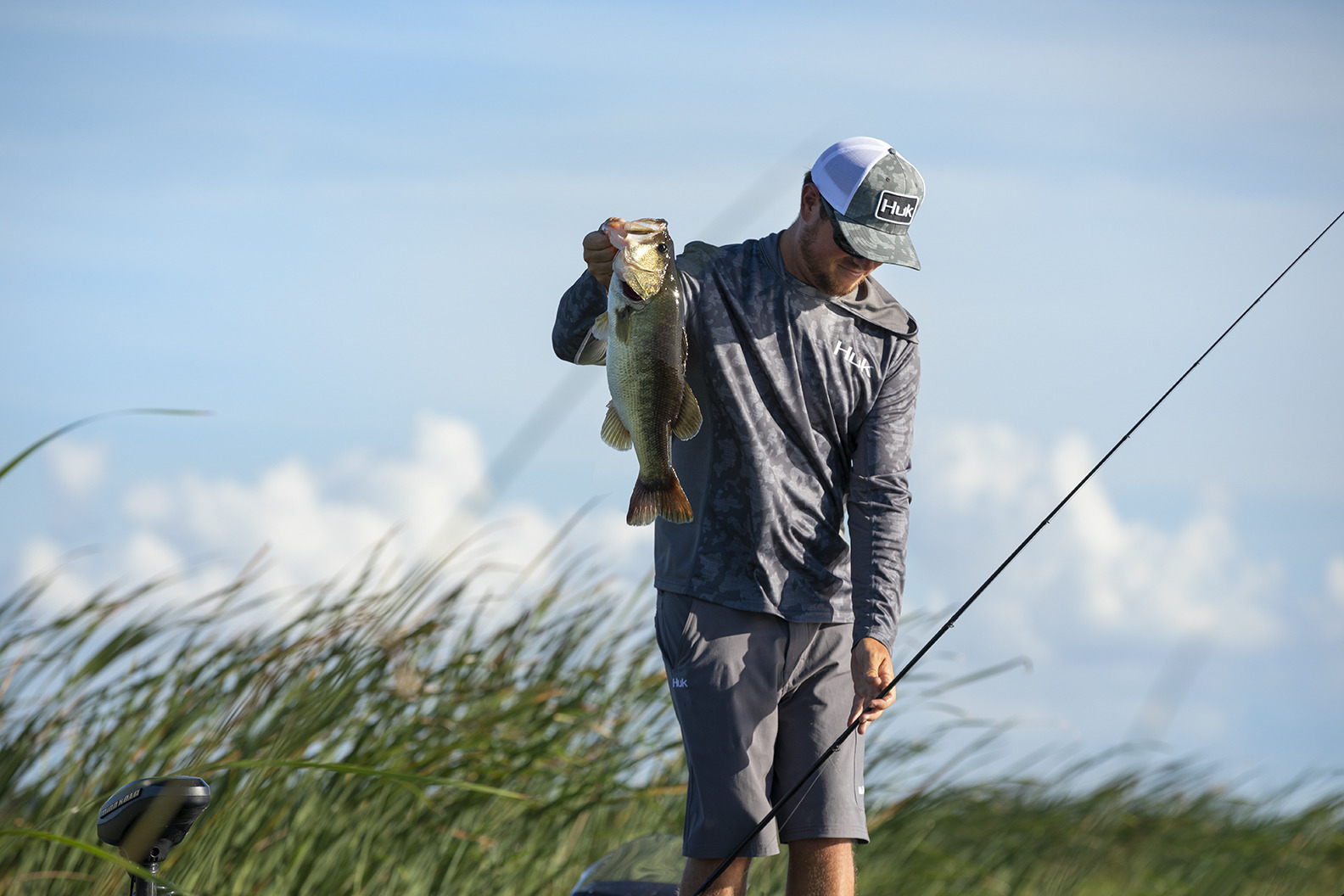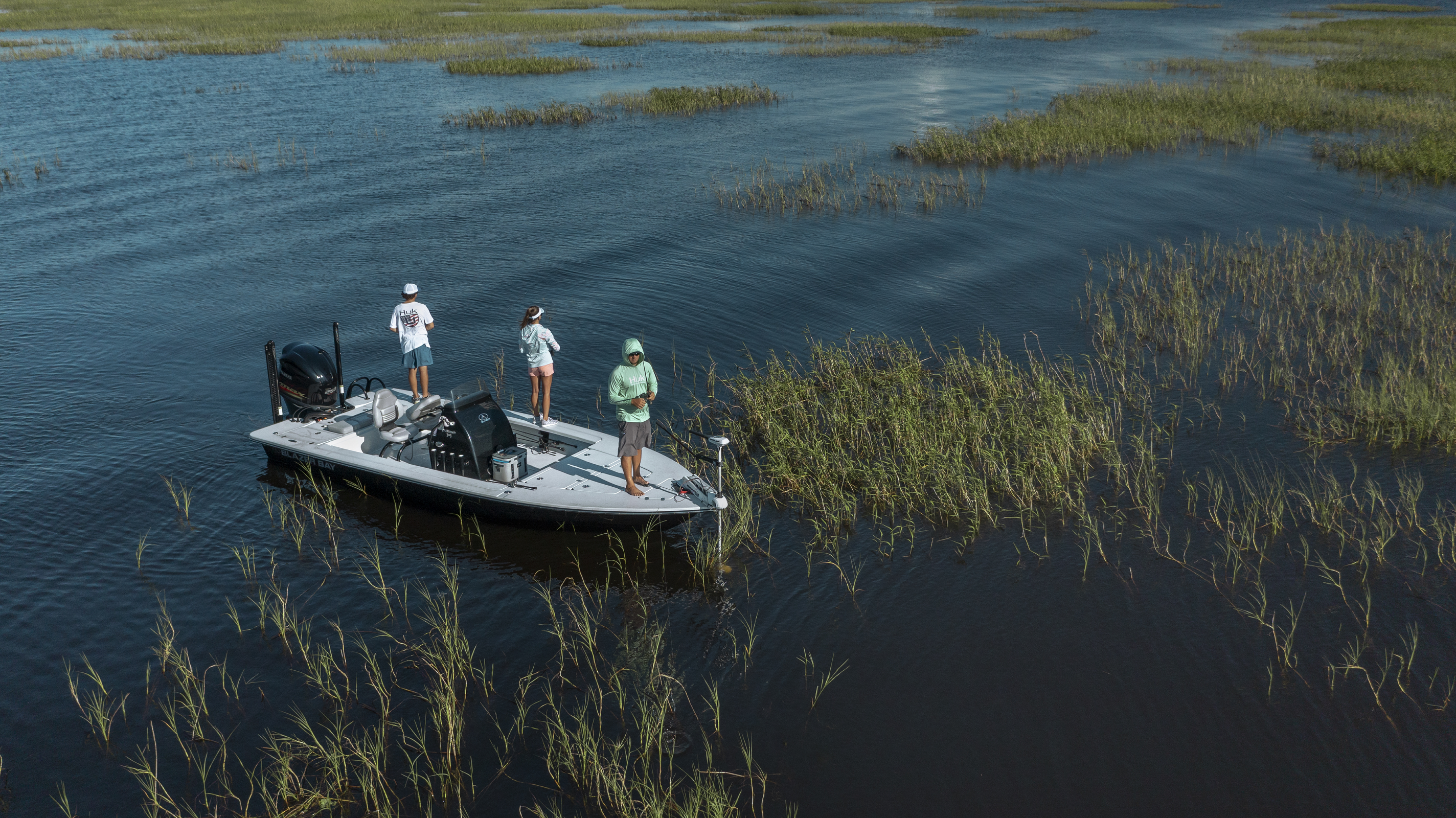Spring is a time of renewal, both on land and beneath the water’s surface. As lawns turn green and trees begin to leaf out once again, parallel changes in every lake, river, and reservoir trigger predictable movements and behaviors among our finned adversaries. Early season angling can be challenging, but these tips will help you meet with sustained fishing success as waters and their inhabitants awaken during the dawn of a new season.
Water temperature is the key
No matter which species of fish you pursue as your season opens, water temperature is a critical connection to success. Surface water that is even just a few degrees warmer than surrounding areas will tend to concentrate actively feeding fish. A good strategy is to focus your efforts on soft-bottomed bays that are off the main body of water. The best bays will frequently be sheltered from the prevailing wind to minimize the influx of cold water, so think about bays on the north or west sides of your favorite lake or reservoir, especially if they have significant shoreline areas that face south to catch an abundance of the sun’s warming rays. Within these bays, shallow areas near shore are generally better than deeper ones. Interestingly enough, current from river inlets can be a double-edged sword in the spring: while current will help to attract and retain species like walleye, cold runoff delivered by river inlets can also reduce local water temperatures and turn the bite off for bass and panfish. Monitor surface temperatures with your electronics at all times in the spring, but especially as you approach river inlets – if you encounter a plume of substantially colder water, it’s time to continue your search in another area.
Coldwater bass strategies
Actively feeding bass are ready to greet anglers as winter turns to spring, as America’s favorite gamefish are bulking up for the hard work of nest building, spawning, and fry guarding that lies ahead. Early season largemouth favor shallow water, frequently along or near shorelines, with a soft bottom and remnant or emerging weedgrowth. During periods of stable weather, pre-spawn largemouth will frequently move quite shallow to bask in the warmth of the sun’s photons, while spring cold fronts will push bass into adjacent deeper areas.
Pre-spawn largemouth respond favorably to active, aggressive presentations. An outstanding way to cover a lot of water over the shallow, weedy flats favored by early-season largemouth is with a bladed jig. Fishing bladed jigs requires that the angler do little more than cast the bait out and crank it in, fast enough to get the blade vibrating steadily. Shallow, pre-spawn bass are baitfish eaters, so hit the water with an assortment of white (to imitate shiners) and blue/black (to imitate bluegill) bladed jigs, as well color-complementary trailers. Lipless rattlebait or squarebill crankbaits are also great early-season choices, especially in areas with hard cover like rocks or wood. Make plenty of contact with the bottom and the cover to trigger aggressive strikes.
Connect with more spring crappies
As winter fades into spring, crappies and other panfish begin a predictable transition from thermally stable, deep water basins toward warming shallows where the food web of the lake is beginning to bloom. This general movement may take a number of weeks and can be easily interrupted by unstable spring weather. This is a transition that will eventually lead to spawning, but reproduction is not driving this initial migration; feeding is!
A classic technique for targeting cold water crappies is to dangle a lively minnow above their heads, suspended from a bobber. Allow me to encourage you to try something different this spring, and that is to fish exclusively with subtle soft plastics rigged on light jigheads. I rely on 2” minnow-profile plastics rigged on 1/16 oz jigheads to put spring and early summer crappies (as well as bluegills and perch) in my boat. The subtle action of these baits is an outstanding trigger for cold water panfish, and the small profile is an excellent mimic for the insect larvae and other invertebrates that constitute the primary forage in these warming waters of early spring. On a tough weather day – as is common in the spring – suspend that jig and soft plastic halfway down the water column with a small slip float, and work it slowly along nearby breaklines that transition quickly to deep water. Panfish will often vacate the shallows for a day or two if a strong cold front passes through, but those same fish remain catchable in deeper water.
Jig your way to spring walleye
There is no lure or presentation more synonymous with walleye fishing than the jig, and jigging is a terrific way to target walleyes early in the season. As water temperatures warm through the 50s, walleyes transition from the rigors of reproduction to strap on the post-spawn feedbag. The bulk of the walleye population remains relatively shallow, feasting on a buffet of baitfish and small panfish that are drawn to warming waters and sparse cover. Presenting a jig tipped with a lively minnow or a supple soft plastic bait will turn heads and trigger strikes.
Focus on a walleye classic: a jig dressed with a live minnow. In the spring, when many walleyes hold in shallow weedbeds, a jig dressed with a minnow can be your ticket to consistent, day-long action. Let’s imagine a classic spring weedbed – really little more than stubble from last year’s growth punctuated by a few green shoots. Begin with a long cast into the heart of the weeds. Don’t be intimidated by all of that greenery, as the light jig – typically 1/16 to ⅛ oz – and buoyant minnow will help the presentation to settle on top of the weed growth, rather than plunge toward the bottom. Work the jig through the weeds using a series of short hops and pops, with regular pauses for the bait to glide back to the weedtops. Frequently, the bite will simply be the presence of extra weight when you begin your next series of hops; if something doesn’t feel quite right, point the rod tip and the bait, take up your slack and set the hook.

Dress for success
One constant in the spring is that the weather is never constant; rather, change is the norm, and that change is frequently for the worse. Warm, calm days can pivot quickly to wind-driven rain and falling temperatures as strong cold fronts impact fish and anglers alike. It’s important to be prepared for the best – and the worst – of what spring has to offer, so you can enjoy as much early-season success as possible.
Sun protection is critical for every angler. As sunshine warms the shallows, the sun’s ultraviolet rays can have damaging effects on exposed skin, and nobody wants to be sidelined by a sunburn – or worse. Huk’s Icon X Mossy Oak Shirt is an outstanding choice for staying in the spring fishing game, no matter the weather. Breathable fabric rapidly wicks perspiration away from your skin, creating a drying effect that keeps you cool on warm days. Huk’s high-performance synthetic construction includes integrated sun protection with a 50+ UPF rating, so you can fish with confidence and comfort.
As warm as spring days might be, it’s always cooler on the water. Huk’s Waypoint Pants are a must-have for long spring days on the water. Their light, soft, yet durable fabric is manufactured from recycled plastic bottles, and like the Huk Icon X Shirt, includes a 50+ UPF rating to help keep you on the water.
Warm spells never last; sometimes, temperatures drop when you least expect it. Huk’s Icon X Lightweight Jacket is a great choice when wind and rain threaten to keep you on the shore. Designed to strike the perfect balance between warmth and breathability, this wind- and water-resistant jacket is constructed with an articulated hood, handwarmer pockets, adjustable cuffs and more. Don’t go fishing without one!
Now you’re ready for anything that spring can throw at you. Put these five tips to work, and enjoy abundant early season fishing success!
